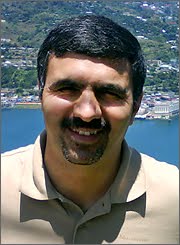(sleeping next to a dumping area in Lagos, Nigeria)
Monday, March 29, 2010
Sleeping society!
In European Union, Sweden, Germany, the Netherlands, Belgium and Denmark have been pretty successfull in waste treatment, in which less than 5% of the wastes are landfilled. However, the other countries in the union as well as most of the other countries in the world still "wasting" their "waste" and not converting to energy and materials. Landfill capacities are being full as e.g. in Sydney, or it becomes a political issue as e.g. in Italy. I visited this week Nigeria in Africa with 150 million people, where the streets all around the country is full of waste, and people suffer from frequent power failures, while this waste can become electricity for them. Let's hope our initiation in collaboration with Nigerian universities wake up this sleeping society!

(sleeping next to a dumping area in Lagos, Nigeria)
(sleeping next to a dumping area in Lagos, Nigeria)
Sunday, March 14, 2010
Rice straw into your gas tank!
According to FAO, we produce about 2 billion tons rice, wheat and other cereal straws and stovers every year. Burning is the main practice in the world to get rid of the straws. Our resutls shows that we can produce about 150-210 m3 methane gas from each ton straw. It means the straw and stovers in the world are enough to produce 350,000,000,000 m3 methane gas per year, which is almost equal to 380,000,000,000 liters gasoline. This biogas can replace 8% of the world consumption of gasoline! See how we burn our valuable resources!

(Burning rice straw after the harvesting)
(Burning rice straw after the harvesting)
Tuesday, March 9, 2010
Composting or digestion in landfills?
Composting is a process to get rid of wastes. In this process, waste is turned to carbon dioxide at present of oxygen, while the remaining materials are generally rich in nutrients and used for cultivating flowers or grasses. However, if the bacteria has no access or limited access to oxygen, anaerobic conditions results in methane formation. Methane is a greenhouse gas and much worse than carbon dioxide. It is a typical problem of landfills with typical dept of 10-15 m. The methane gas together with hot temperature results in smoke and explosions.

(Methane gas development from a landfill in Jayapura)

(Methane gas development from a landfill in Jayapura)
"Mission possible" so "Live happy"
Education is a key to fight poverty. If the researchers, teachers and students at universities and school learn how to convert waste to value-added products in "economically, socially and technically" feasible way, they can contribute to create an adapted infrastructure for waste biorefinery for their own society and in this way to improve the life quality for this lady and her children!

(Picture from a family who live on a landfill)
(Picture from a family who live on a landfill)
Friday, March 5, 2010
"Mission Impossible" so "Die Hard"?
Just look at her face! She is one of the millions scavengers who live hard and perhaps die hard. Is it really an impossible mission for us to change her world? Should we just neglect her? Should we wait for Tom Cruise or James Bond to save her world, or we can do something for her?

(Picture taken from Palu in Sulawesi)
(Picture taken from Palu in Sulawesi)
Thursday, March 4, 2010
Osmotic power plant!
Reverse osmosis is a known process to separate salt from water. In this process, energy is used (generally electricity) and the process occurred through the membranes. Now, the Norwegians want to do the other way around. When rivers with sweet water meet seas with salt water, the salt molecules will be diffused through the coming water. So, why not getting electricity with this osmotic process. More information in Swedish here!

(The picture is from Papua island in Indonesia, close to Jayapura)

(The picture is from Papua island in Indonesia, close to Jayapura)
Wednesday, March 3, 2010
Cheaper cellulase?
Cellulase in an enzyme used to hydrolyze cellulose to cellubiose and glucose. Its high price has been a hinder to develop ethanol process from lignocelluloses via enzymatic processes. However, it seems the 10-years development at Novozyme (and hopefully Genecor as well) has succeeded to produce cheaper cellulase. I congradulate them for this success and hope to have the cheap cellulase soon in the market. Read more about it here!
Tuesday, March 2, 2010
New Blogg!

People are good in producing waste materials, with global production of just municipal wastes of more than 2,000,000,000 tons/year. You can also add the wastes and residuals from agriculture, companies, forestry etc. to this amount. On the other hand, we need a huge amount of energy. So, we should develop smart ways to convert waste to different form of energies such as electricity, heat, chill, ethanol, biogas, or why not materials and make a better environment!
Subscribe to:
Posts (Atom)
This blog is dedicated to collect some interesting news and developments on biofuels, bioenergies, biomaterials and biological treatments of residuals and wastes, as well as my personal opinions in this field.



